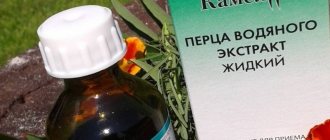"Reamberin" is a solution for a dropper, which is used to treat the consequences of poisoning with food, alcohol, drugs and other substances. Used to relieve acute symptoms of cholecystitis and pancreatitis. The product has a pronounced effect, while it has virtually no side effects. It is placed intravenously, mainly in a hospital setting. In some cases, home use is also allowed.
The drug is used to place IVs. It is produced in the form of a solution. The composition contains the active ingredient - sodium meglumine succinate (15 g per 1 l) and additional components, including:
- sodium chloride;
- magnesium chloride;
- potassium chloride;
- sodium hydroxide;
- water for injections.
The description states that physically “Reamberin” is a colorless solution, has no smell or taste. It is produced in different volumes - 200 ml, 400 ml and 1 l.
"Reamberin" is used as a detoxifying agent to eliminate the effects of poisoning of various natures. The drug protects internal organs (heart muscles, neurons, kidneys, liver) from damage by toxic substances. Acts as an antioxidant and antihypoxic agent (prevents a critical decrease in oxygen concentration in the blood). Stimulates enzymes that destroy dangerous molecules that destroy tissue - free radicals.
Also, the active substance strengthens the membranes of brain neurons, normalizes metabolic processes, and increases the energy potential of the cell. At the same time, Reamberin does not accumulate in cells - it is consumed in full.
Pharmacodynamics and pharmacokinetics
The active substance protects the heart muscle, nerve cells, liver and kidneys from toxins . It also has antihypoxic, antioxidant and detoxification activity. By inhibiting the reactions of fat peroxidation , during hypoxia and ischemia antioxidant are stimulated .
The membranes of brain , kidney, liver and heart are stabilized The product also has a diuretic effect.
Sodium N-methylammonium succinate penetrates cell mitochondria and participates in the Krebs Cycle , inhibiting oxidation reactions and increasing intracellular energy potential ( creatine phosphate and adenosine triphosphate ).
Penetrating into the body, the drug does not accumulate, but is completely consumed.
Pharmacological properties
Pharmacodynamics
REAMBERIN® has an antihypoxic and antioxidant effect, having a positive effect on aerobic processes in the cell, reducing the production of free radicals and restoring the energy potential of cells.
The drug activates the enzymatic processes of the Krebs cycle and promotes the utilization of fatty acids and glucose by cells, normalizes the acid-base balance and gas composition of the blood. Has a moderate diuretic effect. Pharmacokinetics
When administered intravenously, the drug is quickly utilized and does not accumulate in the body.
Instructions for use of Reamberin (Method and dosage)
Depending on the severity of the patient’s condition, different rates of administration and daily dosages are prescribed.
Instructions for use of Reamberin for alcohol intoxication : the drug is administered intravenously , the injection rate is 90 drops per minute. The daily dose is 400-800 ml.
For children, an IV is placed based on the principle of 8 ml of the drug per kilogram of the patient’s weight. The maximum amount of Reamberin is 400 ml per day.
The course of treatment is no more than 11 days.
Dropper "Reamberin": instructions for use
The dosage, rate of administration and total volume are determined by the doctor depending on the condition, age of the patient, chronic diseases and other factors. The standard dosage for the treatment of alcohol intoxication is 90 drops in 60 seconds. In this case, the maximum daily volume is from 40 to 800 ml. The drug is given as a dropper (intravenously).
"Reamberin" is also used to treat children. In this case, the dosage is no more than 8 ml of solution per 1 kg of body weight. The maximum dosage per day is 400 ml. In both adults and children, the total duration of therapy does not exceed 11 days.
No cases of overdose have been identified. However, some patients experience a strong decrease in blood pressure. This is especially dangerous for older people who suffer from hypotension. In such situations, the doctor immediately stops taking the drug and carries out symptomatic treatment. To increase blood pressure, calcium chloride and Polyglucin solution are used (administered in the same way - intravenously, with a dropper).
Analogs
Level 4 ATC code matches:
Calcium Chloride
Calcium chloride
Magnesium sulfate
Sodium chloride
Potassium chloride
Rheosorbilact
Analogues of the product are: xylate, potassium chloride, glyxyl, calcium chloride, lactoxyl, magnesium sulfate, sodium bicarbonate, sodium bicarbonate, sodium chloride, plerigo .
Compound
Active ingredient: sodium meglumine succinate – 15.00 g.
Excipients: sodium chloride – 6.00 g, potassium chloride – 0.30 g, magnesium chloride hexahydrate (in terms of anhydrous) – 0.12 g, sodium hydroxide – 1.788 g, succinic acid – to pH from 6.0 to 7.0, water for injection – up to 1.0 l.
Ionic composition per 1 l:
- sodium 147 mmol - potassium 4.02 mmol - magnesium 1.26 mmol - chlorides 109 mmol - succinates 46.0 mmol - meglumine 44.7 mmol
Theoretical osmolarity 353 mOsm/l
Description: transparent colorless liquid.
Pharmacotherapeutic group: solutions affecting water and electrolyte balance. ATX code: В05ВВ
Reviews of Reamberin
Reviews about Reamberin are good. The drug copes well with the task of freeing the body from toxins and rehabilitation after severe infectious diseases. In itself, while not being a panacea for any specific disease, the medicine significantly speeds up the healing process. Sometimes side effects occur, and therefore the drug is not recommended for use outside the hospital.
Reviews of Reamberin for psoriasis : The use of the drug in the treatment of this disease is a controversial issue, but some experts prescribe the drug in order to free the body of toxins, improve metabolic processes, improve liver function and, as a result, cure a person of psoriasis. With long-term use in courses, under the supervision of an experienced doctor, the medicine gives good results.
Indications and contraindications for the use of the Reamberin dropper
A dropper with Reabmerin solution is placed as prescribed by a doctor in the following cases:
- hypoxia, for example, due to problems with the heart, lungs, after surgery;
- poisoning of the body (intoxication);
- cholestasis;
- hepatitis of toxic and viral nature;
- state of shock due to illness, accident or other origin.
In some cases, it is impossible to put an IV - the Reamberin product has several contraindications:
- pregnancy, breastfeeding at any stage;
- allergies, individual intolerance to individual components;
- alkalosis;
- swelling of the brain (especially against the background of a traumatic brain injury).
Side effects of using the drug include:
- anaphylactic shock;
- skin rashes;
- hives;
- angioedema;
- dyspnea;
- increased heart rate;
- cough;
- jumps in blood pressure - there can be either an increase or a decrease;
- tremor;
- anxiety states;
- convulsions;
- nausea.
Reamberin price, where to buy
The price of Reamberin in 1.5% packages is about 142 rubles per 250 ml.
The cost of 500 ml of the drug with the same dosage is 162 rubles.
- Online pharmacies in RussiaRussia
- Online pharmacies in UkraineUkraine
- Online pharmacies in KazakhstanKazakhstan
Pharmacy Dialogue
- Reamberin (vial 1.5% 200ml) Polisan NTFF
196 rub. order - Reamberin (vial 1.5% 400ml) Polisan NTFF
RUB 248 order
show more
Pharmacy24
- Reamberin 1.5% 200 ml solution for infusion TOV NTFF Polisan, Russian Federation
74 UAH order - Reamberin 1.5% 400 ml TOV NTFF Polisan, Russian Federation
92 UAH order
PaniPharmacy
- Reamberin infusion Reamberin solution inf. 200ml Russia, Polisan
96 UAH order
- Reamberin infusion Reamberin solution inf. 400ml Russia, Polisan
103 UAH order
show more
Drug interactions and special instructions
The medicine is used mainly only in hospital settings. It is sold in pharmacies only with a doctor's prescription. With long-term use, it is possible to decrease the level of glucose in the blood, as well as change the color of urine.
The shelf life of the drug is 3 years from the date of production. Storage conditions: in a dark place at a temperature of 0-25 degrees, can be frozen without re-freezing. It is not allowed to use a solution with a changed appearance or color.
"Reamberin" acts as an antagonist to barbiturates. If the patient systematically uses Phenobarbital and other drugs of the same series, the doctor must be told about this in advance. Temporary cancellation of the main course of therapy is possible.
Directions for use and doses
Adults: administered intravenously at a rate of 1–4.5 ml/min (up to 90 drops per minute). The average daily dose is 10 ml/kg. The course of therapy is up to 11 days.
Children: administered intravenously at a rate of 6–10 ml/kg per day at a rate of 3–4 ml/min. The course of therapy is up to 11 days.
Use in elderly patients. No studies have been conducted in elderly patients. In this regard, the use of the drug should be started with a slower rate of administration: 20–40 drops (1–2 ml) per minute.
Use in patients with renal failure. No studies have been conducted in patients with renal failure. In this regard, it is recommended to exercise caution when using the drug in such patients.
Use for alkalosis. If decompensated alkalosis is detected, the use of the drug should be discontinued until the acid-base state of the blood normalizes.
Release form
Solution for infusion 1.5%. 200 ml in glass bottles with a capacity of 250 ml or 400 ml in glass bottles with a capacity of 450 or 500 ml, sealed with rubber stoppers, crimped with aluminum or combined aluminum and plastic caps. Each bottle, along with instructions for medical use, is placed in a cardboard pack, on which a tamper evident label can be applied.
250 or 500 ml in containers made of multilayer polyolefin film. 5 or 10 containers of 250 or 500 ml, together with instructions for medical use, are placed in a corrugated cardboard box (prescription). 32 containers of 250 ml or 20 containers of 500 ml, together with instructions for medical use, are placed in a group container in a corrugated cardboard box (for hospitals). The number of instructions for medical use is equal to the number of primary packaging in a group container.
Side effect
According to the World Health Organization, adverse effects are classified according to their frequency as follows:
– very frequent (≥ 1/10); – common (from ≥ 1/100 to – infrequent (from ≥ 1/1000 to – rare (from ≥ 1/10000 to – very rare ( – frequency unknown (cannot be determined based on available data).
If the drug is administered quickly, undesirable effects are possible.
General disorders and disorders at the injection site: very rarely - hyperthermia, chills, sweating, weakness, pain at the injection site, edema, hyperemia, phlebitis. Immune system disorders: very rarely - allergic reactions, angioedema, anaphylactic shock. Disorders of the skin and subcutaneous tissues: very rarely - allergic rash, urticaria, itching. Disorders of the respiratory system, chest and mediastinal organs: very rarely - shortness of breath, dry cough. Cardiac disorders: very rarely - tachycardia, palpitations, shortness of breath, pain in the heart, chest pain. Vascular disorders: very rarely - arterial hypotension/hypertension, short-term reactions in the form of a burning sensation and redness of the upper body. Gastrointestinal disorders: very rarely - nausea, vomiting, metallic taste in the mouth, abdominal pain, diarrhea. Nervous system disorders: very rarely - dizziness, headache, convulsions, tremor, paresthesia, agitation, anxiety. To avoid unwanted effects, it is recommended to adhere to the dosage regimen and rate of administration of the drug. If adverse reactions occur, it is recommended to reduce the rate of drug administration. If any of the undesirable effects indicated in the instructions get worse or you notice any other undesirable effects not listed in the instructions, tell your doctor.
special instructions
Due to the activation of aerobic processes in the body by the drug, a decrease in the concentration of glucose in the blood and the appearance of an alkaline reaction in urine are possible. In patients with diabetes mellitus and patients with reduced glucose tolerance, periodic monitoring of blood glucose concentrations is required. If the color of the solution changes or there is a precipitate, the use of the drug is unacceptable.
Effect on the ability to drive vehicles and machinery It is not recommended to drive vehicles or operate machinery during a course of treatment with REAMBERIN®.
Contraindications
Individual intolerance, condition after traumatic brain injury, accompanied by cerebral edema, acute renal failure, chronic kidney disease (stage 5, glomerular filtration rate less than 15 ml/min), pregnancy, breastfeeding period.
With caution
In case of alkalosis, renal failure.
Use during pregnancy and breastfeeding The use of REAMBERIN® during pregnancy and breastfeeding is contraindicated due to the lack of clinical studies in these groups of patients.








